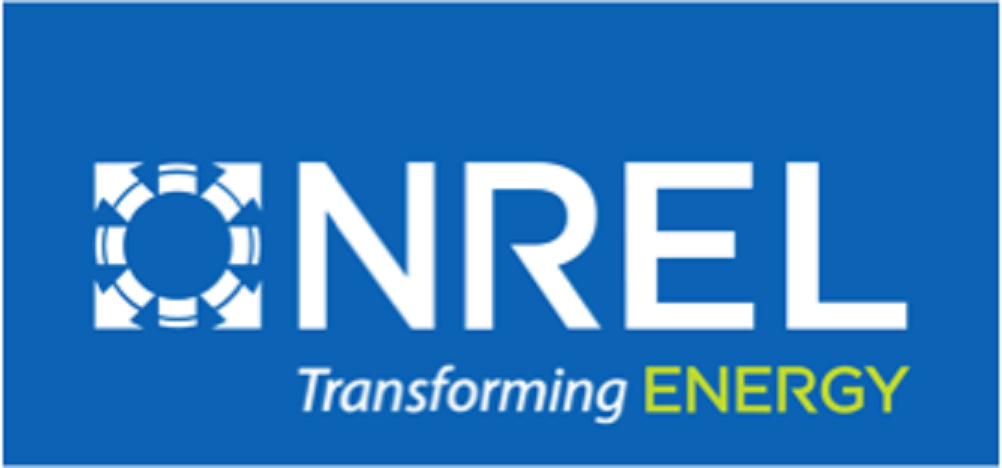NREL and Project Partners Team-Up To Advance Species Conservation and Wind Energy Deployment
Just dropping by for a bit: Hoary bats like the one above sometimes migrate hundreds of miles each year and can be found in almost every U.S. state. Critical pollinators and pest control creatures, bats sometimes get struck by wind turbines on their journey, which is why NREL helped organize and now coordinates the Bats and Wind Energy Cooperative (BWEC) to develop and disseminate solutions to meet conservation and renewable energy production goals. Photo by Paul Cryan, United States Geological Survey (USGS)
As wind energy continues to supply more power to the electric grid, development of cost-effective solutions to detect and deter wildlife from wind energy facilities grows with increasing importance.
Wildlife impacts can extend permitting timelines, add unanticipated costs for developers and operators, and constrain energy output at wind energy facilities. Effectively responding to these challenges requires multi-stakeholder collaboration and expertise in a diverse array of fields.
That is why the National Renewable Energy Laboratory (NREL) and Defenders of Wildlife (Defenders) launched Wildlife and Wind Energy: Considerations for Monitoring and Managing Impacts, a nine-part webinar series to help familiarize stakeholders with the nuances of land-based wind energy development in the context of species conservation.
Held from September through December, the webinar series helped attendees understand a variety of topics ranging from species-specific discussions and methodologies for reducing impacts on wildlife to regulatory and financing perspectives on effective mitigation strategies for species protection.
“The impact of wind turbines on certain wildlife species like birds and bats is well documented, but many questions remain on how best to respond from a conservation perspective while supporting a growing renewable energy sector,” Senior Researcher Cris Hein said. “By partnering with Defenders and inviting a wide range of subject matter experts, we were able to provide attendees a fairly comprehensive overview of the intersection between wind energy development and wildlife to help familiarize attendees with applied techniques for monitoring, permitting, reporting, and minimizing impacts.”
A blue bird takes flight from a tree branch.
Initiating launch sequence: Small birds like the tree swallow shown here can collide with wind turbines. While bird impacts from wind turbines are negligible relative to other human-related sources of bird fatality (communication towers, buildings, windows, and domestic cats), collaborative efforts among the wind industry, nongovernmental organizations, and regulatory entities aim to further reduce these numbers. Photo by Werner Slocum, NREL
A Living Lab
NREL’s wind energy program has a long history of working to understand and minimize wind impacts to wildlife to further advance wind energy deployment across the United States. That history stretches back to a population study of golden eagles at the Altamont Pass wind farm, where NREL worked with environmental and wind industry stakeholders to understand the needs of both groups. The collaborative effort helped to make the intersection between energy and wildlife issues a priority area of research for NREL and the U.S. Department of Energy, paving the way for existing efforts to identify and prioritize solutions that help protect wildlife while advancing land-based and offshore wind energy deployment.
Today, NREL’s Flatirons Campus hosts several projects and partners who have chosen to conduct their research with NREL. Just south of Boulder, Colorado, at the mouth of Eldorado Canyon, the Flatirons Campus enables staff and project partners to validate their technologies under a wide array of possible climatic conditions.
A crane with a man atop it installs UV lights on a wind turbine tower.
Elevated scientific expertise: The Fort Collins Science Center of the USGS installed dim ultraviolet lights on two utility-scale wind turbines to assess whether the light will prevent bats from approaching and being struck by moving blades. In addition, thermal-video cameras monitor bat, bird, and insect activity within the swept area of the turbine’s rotor, providing data to assess the safety and effectiveness of the system. Photo by Bethany Straw, USGS
In addition, project partners receive access to a suite of research turbines, electronics and instrumentation laboratories, meteorological towers, 20 network-connected cameras, state-of-the-art modeling and computational capabilities powered by high-performance computers like the aptly named Peregrine and Eagle supercomputers, and calibration and measurement instruments that make Flatirons Campus a living lab for wind-wildlife research and validation.
“These research efforts not only rely on the latest science and research in the field, but also effective coordination and dissemination of best practices and techniques for helping wildlife species and wind energy coexist,” NREL Senior Project Leader Karin Sinclair said. “Our project portfolio includes work with a variety of experts from government and nongovernment agencies. NREL serves as a natural convener on projects that intersect with wind energy and species conservation because of our history and expertise working in this arena.”
Future Developments in Context
In 2019, wind overtook hydropower as the most-used renewable generation source in the United States, generating 300 million megawatt-hours of electricity or roughly 6% of the nation’s total power output.
As technological advances continue, wide areas of the country, including coastal regions, will be unlocked for further wind energy development. As a result, more efficient and cost-effective wind-wildlife impact monitoring and minimization technologies will be needed to continue this rapid expansion while simultaneously protecting wildlife species.

